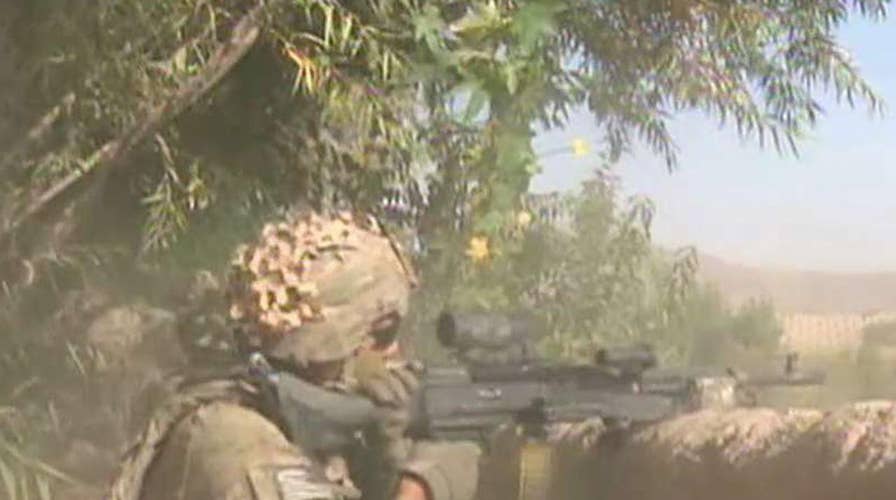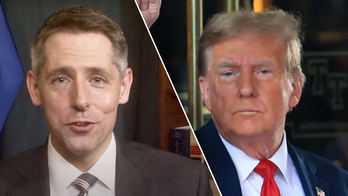President Trump is receiving a proposal from top advisers to send thousands more U.S. troops to Afghanistan and loosen the rules of engagement, all part of an effort to assist Afghan allies and put renewed pressure on the Taliban.
The plan on the table would send an additional 3,000-5,000 troops to the country.
In a significant shift, it also reportedly would give the Pentagon – as opposed to the White House – the authority to set troop numbers. A senior White House official told Fox News that the "Afghanistan review is done and President Trump will be briefed on it soon."
There currently are 8,400 U.S. troops in Afghanistan, down from a high of 100,000 in 2011. About 1,400 troops were taken out of Afghanistan at the end of then-President Barack Obama’s term in office – the proposal before Trump would make up that gap, and then some.
Top military officials indicate an additional contingent is needed to prop up the Afghan military, at a time when the government is losing territory to the Taliban.
The head of U.S. Special Operations Command Army Gen. Raymond “Tony” Thomas told Congress last week he does not need more special ops troops but agreed with other senior U.S. commanders that more conventional troops would help train Afghan forces.
“More conventional forces that would thicken the ability to advise and assist Afghan forces, that would absolutely be to our benefit,” Thomas said.
Thomas said more troops would send a signal to the U.S.-backed Afghan government. “I think the critical factor is the commitment — the commitment to some enduring state that has not been described effectively in the past,” he said.
Plans for additional troops have been in the works for weeks. Late last month, the U.S. Army announced it would send approximately 1,500 troops from the 1st Brigade Combat Team, 82nd Airborne Division to Afghanistan to replace a unit stationed there. Fox News has learned the plan to increase American forces on the ground would likely mean the entire brigade would deploy next month, not just 1,500 troops.
Another source of troops could be in Army aviation. The Pentagon has long complained that Obama-era “troop caps” in Afghanistan meant that helicopter squadrons deploying to Afghanistan would take only the pilots and leave their mechanics behind.
Officials say this is a problem Defense Secretary Jim Mattis plans to remedy as soon as possible.
Another part of the proposal concerns the rules governing the use of military force on the battlefield. Thomas has said the rules of engagement in Afghanistan would need changing to thwart a resurgent Taliban. Last month, 140 Afghan soldiers were massacred in the northern part of the country.
In a sign that more American troops are finding themselves in harm’s way, three Army special operations soldiers—a Green Beret and two Army Rangers—were killed last month in combat in Afghanistan.
NATO also is expected to contribute to the troop increase in Afghanistan. Gen. John Nicholson, the head of U.S. forces in Afghanistan, told Congress in February he needed a “few thousand” American and NATO forces to help train the Afghan Army, which kick-started this review process.
According to The Washington Post, Trump is expected to decide on the strategy before a May 25 NATO summit. It’s unclear where the president will fall on the proposals.
The Post also reported on divisions inside the White House, where critics reportedly call the plan “McMaster’s War,” in reference to National Security Adviser H.R. McMaster.
Bloomberg also reported that some in the White House are worried about McMaster’s supposed push toward the kind of “nation building” Trump opposed as a candidate.
Trump, however, has taken a tough approach as president to the broader war on terrorism. On his watch, the U.S. military dropped the so-called “mother of all bombs” on an Afghanistan target in April. The deployment of the largest non-nuclear bomb in the U.S. arsenal killed dozens of ISIS targets, officials said.
Fox News’ Lucas Tomlinson, Jennifer Griffin and Serafin Gomez contributed to this report.





